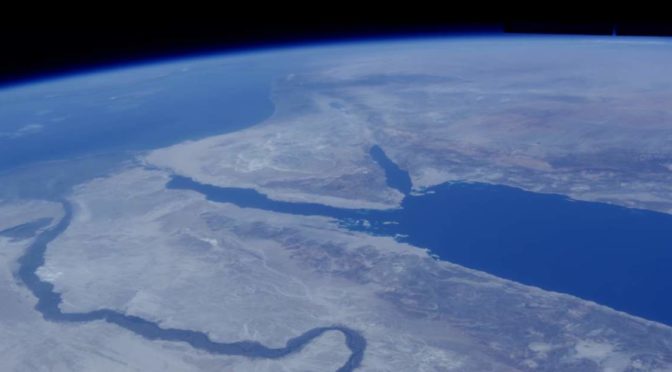Earth, our living planet from space: life makes Earth unique among the thousands of other planets we’ve discovered so far – there may be extraterrestrial life, or maybe not (see notes 1), but it is the only “living planet” that we know of. Since 1997 (see notes 2), NASA satellites have continuously observed all plant life at the surface of the land and ocean. This view of life from space is furthering knowledge of our home planet, and how it’s changing.
In the Northern Hemisphere, ecosystems wake in the spring, taking in carbon dioxide and exhaling oxygen as they sprout leaves – and a fleet of Earth-observing satellites track the spread of vegetation. Meanwhile, in the oceans, microscopic plants drift through sunlit surface waters blooming into billions of carbon dioxide-absorbing, oxygen-producing organisms – and satellites map the swirls of their color.
Video: our living planet from space
Here is a beautiful video published by NASA Goddard channel, titled “Our Living Planet From Space”.
Credits:
- LK Ward (USRA): Lead Producer
- Patrick Lynch (NASA/GSFC): Editor
- Compton Tucker (NASA/GSFC): Scientist
- Ivona Cetinic (NASA/USRA): Scientist
- Aaron E. Lepsch (ADNET Systems, Inc.): Technical Support
Music: Out of Hours by Sound Pocket Music; Watching Ladybirds by Benjamin James Parsons; Marimba Rhythms by Hamilton Winch Complete transcript available.

Notes
- There are two main opinions about how usual is life in the Universe. One of them is known as the “Rare Earth Hypothesis”. It argues that the origin of life and the evolution of biological complexity such as sexually reproducing, multi-cellular organisms (and, subsequently, human intelligence) required an improbable combination of astrophysical and geological events and circumstances. According to the hypothesis, complex extraterrestrial life is a very improbable phenomenon and is likely to be extremely rare. The term “Rare Earth” originates from Rare Earth: Why Complex Life Is Uncommon in the Universe (2000), a book by Peter Ward, a geologist and paleontologist, and Donald E. Brownlee, an astronomer and astrobiologist, both faculty members at the University of Washington. An alternative viewpoint was argued in the 1970s and 1980s by Carl Sagan and Frank Drake, among others. It holds that Earth is a typical rocky planet in a typical planetary system, located in a non-exceptional region of a common barred-spiral galaxy. Given the principle of mediocrity (in the same vein as the Copernican principle), it is probable that the universe teems with complex life. The mediocrity principle is the philosophical notion that “if an item is drawn at random from one of several sets or categories, it’s likelier to come from the most numerous category than from any one of the less numerous categories”. Here the random item is the life on Earth, and according to the principle of mediocrity, it’s likelier to come from the most numerous category, which means life must be frequent in the Universe.
- Sea-viewing Wide Field-of-view Sensor (SeaWiFS), was launched on August 1, 1997, with the purpose of examining oceanic factors that affect global change and assessing the oceans’ role in the global carbon cycle, as well as other biogeochemical cycles.
Sources
- Rare Earth Hypothesis on Wikipedia
- “The Changing Colors of our Living Planet” on NASA.gov
- Sea-viewing Wide Field-of-view Sensor (SeaWiFS) on NASA.gov
- Space Shuttle Endeavour’s Touchdown Meets Columbia’s Salute [An amazing photo from the past] - February 29, 2024
- Moon Landings: All-Time List [1966-2024] - February 23, 2024
- From Orbit to Ordinary: 10 Earthly Applications of Space Technology - January 23, 2024

